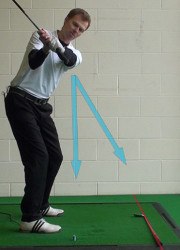
If you can define the term “swing plane,” you’re way ahead of most golfers.
Swing plane is one of the least-understood concepts in the game. To some, it’s only slightly less confusing than nuclear physics. In fact, swing plane is quite simply defined as the angle on which the club’s shaft moves around the body.
When discussing swing plane, instructors and analysts always use a view from the golfer’s right (for a right-hander) looking toward the target. From here, the position of the left arm and shaft moving up and down signal the plane.
Once you understand what the swing plane is, the obvious question becomes, What is the correct swing plane?

As with most everything in golf, there’s no single answer that applies to everyone. It depends on your posture, the position of your hands and arms, even your body type. There is, however, an easily defined plane to strive for – and positions to avoid.
When addressing the ball, imagine the club’s shaft continuing on a line through your body, intersecting just below the shoulder. Ideally, the club will move up (backswing) and down (downswing) this angle throughout the swing. (On the downswing, the plane may lower slightly and still be in good shape.)
If the club dips below this line, the plane becomes too horizontal, referred to as “flat” or “under the plane.” If it tilts above the line, it’s overly vertical, as in “upright,” “steep” or “above the plane.”
Swing plane isn’t all that complicated compared to, say, the Higgs boson particle. The drills in this series will teach you to find and maintain a plane that works for you, or to fix one that doesn’t.






